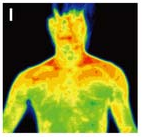Mommy, where does a bee go when it dies?
A couple years ago I got interested in following the honey bee die-off problem that has come to be known as Colony Collapse Disorder. At first it appeared that there might be something mysterious going on that caused the bees to disappear. Being open to strange things, I figured I’d listen and see if some reasonable explanation would come along. For if it didn’t, without honey bees to pollinate humanities crops, we’d be in for a big hungry problem in no time at all.
A quick search on Google finds a reasonable Wikipedia entry that reads:
Colony Collapse Disorder (CCD) or sometimes honey bee depopulation syndrome (HBDS)[1] is a phenomenon in which worker bees from a beehive or European honey bee colony abruptly disappear. While such disappearances have occurred throughout the history of apiculture, the term colony collapse disorder was first applied to a drastic rise in the number of disappearances of Western honey bee colonies in North America in late 2006.[2] Colony collapse is economically significant because many agricultural crops worldwide are pollinated by bees. European beekeepers observed similar phenomena in Belgium, France, the Netherlands, Greece, Italy, Portugal, and Spain,[3] and initial reports have also come in from Switzerland and Germany, albeit to a lesser degree[4] while the Northern Ireland Assembly received reports of a decline greater than 50%.[5] Possible cases of CCD have also been reported in Taiwan since April 2007.[6]
The cause or causes of the syndrome are not yet fully understood, although …
That’s the basic background into the problem. Now, what might be the cause?
About a year ago, I stumbled upon a great YouTube video from a passionate woman posting as “beepassionate’s channel”. What she happened to say struck me as a reasonable solution to the problem.
So, rather than spelling it all out here for you to read, I’m just going to link in her original video and the followup video that came along 18 months later.
I would be willing to guess that Colony Collapse Disorder is not some mysterious mystical happening, but rather man run amuck in the chemical factory! It seems, others might be figuring this out too:
Honeybee Colony Collapse Disorder Finally Explained: Too Many Chemicals
(NaturalNews) A combination of toxic chemicals and pathogens are probably to blame for colony collapse disorder in honeybees, according to a study conducted by researchers at Washington State University.
Researchers conducted careful studies to uncover contributors to the disorder, in which seemingly healthy bees simply vanish from a hive, leaving the queen and a handful of newly hatched adults behind.
“One of the first things we looked at was the pesticide levels in the wax of older honeycombs,” researcher Steve Sheppard said.
The researchers acquired used hives from the U.S. Department of Agriculture, finding that they had “fairly high levels of pesticide residue.” When bees were raised in these hives, they had “significantly reduced longevity,” the researchers said.
…
Here is another article from the same site:
Colony Collapse Disorder Debunked: Pesticides Cause Bee Deaths
(NaturalNews) The great mystery of bee deaths has been solved. Colony Collapse Disorder is poisoning with a known insect neurotoxin. Clothianidin, a pesticide manufactured by Bayer, has been clearly linked to die offs in Germany and France.
Although the bee die offs that have occurred recently are more severe, there have been many in the past from the same and similar products. In North Dakota, a lawsuit is pending against Bayer for the loss of their bees in 1995, the result of spraying rapeseed with Imidacloprid. In 1999, the same product was banned in France for use as a seed dressing for sunflowers when they lost one-third of their hives after widespread spraying. In 2004, it was banned for use on corn. Recently, France refused to approve Bayer’s request to sell Clothianidin.
Clothianidin and Imidacloprid are both members of a class of pesticides called neonicotinoids. They are well known as insect neurotoxins, especially with regard to bees. The spokesperson for the Coalition Against Bayer Dangers, based in Germany, stated, “We have been pointing out the risks of neonicotinoids for almost 10 years now. This proves without a doubt that the chemicals can come into contact with bees and kill them. These pesticides shouldn’t be on the market.”
…
Looks like Mother Earth News picked up on this problem.
Colony Collapse: Are Potent Pesticides Killing Honeybees?
Colony collapse disorder has wreaked havoc on U.S. beekeeping businesses (and the agriculture industry) since its devastating arrival in 2006. The veiled killer entered hives across Japan for the first time earlier this year, affecting 25 percent of the national beekeeping association members. Now the U.S. Environmental Protection Agency (EPA) is being sued by the nonprofit Natural Resources Defense Council (NRDC) for withholding details about the impact of neonicotinoids — a class of widely used pesticides — on honeybees and other pollinators
…
If you want a bigger list of articles, search Google using the string “colony collapse disorder causes pesticide”.
The way I see it, this type of problem is money based. Thus, to change it, we need to change where and how we spend our money. Basically, don’t spend your money to buy products from companies that you know are part of the problem. Buy products from companies that are part of the solution.





